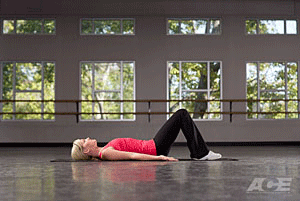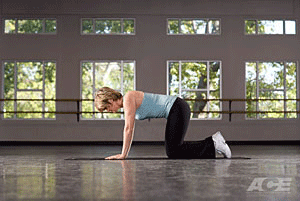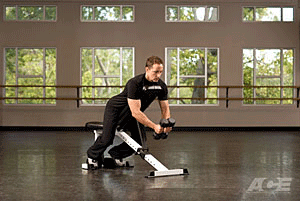Imagine explaining to your great-great-great-great-grandparents what the biggest health threat to the industrialized world currently is: “We have too much food and we don’t physically labor hard enough.”
We’re not inherently lazy. It’s just that the necessities of daily life no longer require a high level of physical exertion. It appears, however, that we need to breathe hard, sweat and be challenged physically to maintain health. We now have to consciously add this movement to our day in the form of exercise.
Time spent exercising is a window of opportunity to either overcome some of the physiological and/or biomechanical deficiencies we’ve created through inactivity or potentially make them worse. When an exercise program is done improperly or does not align with the needs and abilities of the exerciser, pain and injury can lead to a total departure from the program.
Just about any form of exercise is better than no exercise. However, to ensure an exercise program is guiding the body away from pain and injury, consider the following tips:
Focus on Exercises That Reverse the “Sitting” Posture
While sitting, most of the spine and articulating joints adopt a “flexed” position. If done for prolonged periods, this position could lead to poor posture, pain and joint dysfunction.
When choosing exercises and movements to prioritize in the gym, consider those that are opposite to that of sitting:
- Hip Flexors During Sitting: The hip flexors are held in flexion.
- Exercise Suggestions: Prioritize hip extension with exercises such as the deadlift, bridge and swing variations.

- Lumbar Spine (Lower Back) During Sitting: The lumbar spine is flexed, adding compression to the disks.
- Exercise Suggestions: Prioritize natural lordotic curve and pelvic control with exercises such a bird-dog variations, prone arm/leg lift variations and plank variations.

- Thoracic Spine (Upper Back) During Sitting: The thoracic spine is flexed, which adds to the compression in the lumbar spine and slopes the shoulders forward.
- Exercise Suggestions: Prioritize thoracic extension and scapular retraction with exercises such as back extension variations, deadlift variations, row variations and horizontal abduction variations (e.g., reverse flyes)

Exercises that actually mimic the sitting position, such as abdominal crunches, should be minimized.
Create Muscular Balance Around the Joints
There are two primary ways to create physical pain and dysfunction: Do nothing or do too much of one thing. In either of these cases, an imbalance of strength, stability and mobility is created around a joint. Eventually, this prevents the joint from working properly, resulting in pain and a decrease in performance.
Select exercises that challenge opposing muscles, either within a workout or over the course of a workout week. For example:
- For every “push” (push-up, bench press, military press, etc.), perform a “pull” (rows, pull-ups, lat pull-down, etc.).
- Check out this article for "pull" exercise ideas: ACE-SPONSORED RESEARCH: What Is the Best Back Exercise?
- For every “quad dominant” exercise (squat, lunge, leg press), do a “hip dominant” exercise (dead lift, swing, bridge, etc.).
- Check out this article for “hip dominant” exercise ideas: ACE-SPONSORED RESEARCH: What Is the Best Exercise for the Hamstrings?
- For every “trunk flexion” exercise (crunch variations), do a “trunk extension” exercise (back extension variations, prone extension variations, dead lift variations)
- Check out this article for “trunk flexion” exercise ideas: Reality Check: Are Planks Really the Best Core Exercise?
- For every exercise done in the sagittal (forward and back) plane (pushes, pulls, squats, lunges, dead lifts, etc.), do an exercise in either the frontal (side to side) plane (lateral lunges, lateral raises, lateral shuffles, etc.) or transverse (rotational) plane (chop and rotation variations).
- Check out this article for shoulder exercise ideas: Dynamite Delts: ACE Research Identifies Top Shoulder Exercises
To take it a step further, consider exercises that focus on reversing the “sitting” posture (pulls, extensions, hip dominant, etc.) and do two of these exercises for every one of the others (flexions, quad dominant, pushes, etc.)
By attending to the balance of strength around a joint, mobility and function can be maintained and the likelihood of pain and injury is minimized.
Whole-body Warm-up
After sitting all day, the joints, tissues and general physiology of the human body isn’t prepared to take on the challenges of intense movement and load. Always perform a whole-body warm-up that enhances communication between the brain and body, while helping joints and muscles emerge from the sitting position so they can work effectively.
Do It Right
For the most part, the common exercises you know and love can actually improve your overall function, resilience and vitality. That is, when they are done correctly.
When exercises are done correctly, joints move the way they are supposed to. The proper muscles work to mobilize and stabilize joints. This harmony creates improvements in function and performance. Muscles get stronger and joints stay healthy.
When done incorrectly, joints don’t move the way they are supposed to. This can cause a shift of load away from muscles and into a compromised joint. To protect against a potential injury, various muscles must compensate, detracting from the challenge to the intended muscle group.
Take the following steps to improve your exercise technique:
- Consult with a certified health and exercise professional. A certified personal trainer can help make sure you are performing exercises correctly in addition to helping you create a balanced, effective program.
- Slow down. Every six to eight weeks, decrease the resistance you use by about one-third. Instead of counting reps, time each round for 40 seconds. During these 40 seconds, attempt to perform 10 or fewer repetitions. This places the focus on movement technique and tempo while still delivering a challenge.
- Rest. The current trend of high-intensity interval training has encouraged exercisers to slash rest times. While decreased rest times can be beneficial when used correctly, they can also detract from the focus on proper execution of an exercise. Make sure rest periods are long enough for your body to recuperate and perform the next set of exercises correctly.
Exercise is an opportunity to break the modern daily mold of inactivity. Just about any form of exercise is better than none at all. Following these tips, however, can ensure your exercise program helps you stay active, pain-free and performing at your best for life.




 by
by 









 by
by